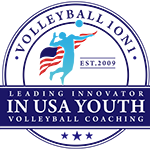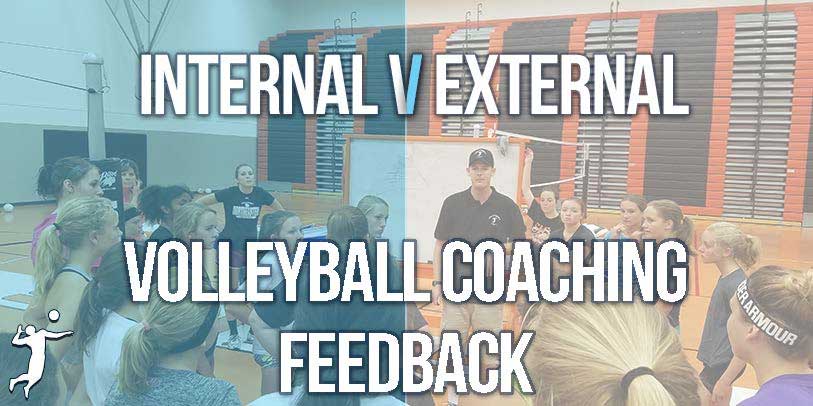“Research increasingly supports the view that external focus affects motor learning by directing the attention to the outcomes of movements instead of the movements themselves.The goal is to make actions more automatic and reduce conscious control;”
As coaches, we can all relate to the same, maddening question: Why won’t our athletes listen?
Over and over again, hundreds, if not thousands, of times, we will direct them, show them exactly how their bodies should be positioned for certain skills or the exact footwork to use in various approaches and yet – the same mistake occurs. Again, and again.
We wonder what is wrong with the athlete, why the message just won’t click. But the flaw is not in the athlete. It is, in reality, in the method by which we are giving feedback.
The difference between internal and external feedback cues / keys is not monumental. Sometimes it is hardly noticeable. As sports coaches, we are often inclined to focus internally, or what our bodies are literally doing. We pinpoint hand location, footwork, what muscles to use for passing and which ones to activate when hitting. There are occasions – novices, in particular – when this is the most effective feedback. There are also occasions when this type of feedback (Internal) may only exacerbate the issue we are attempting to alleviate.
Providing external feedback is to switch the athlete’s mindset. For example, rather than focusing on finishing a hand set with their arms fully extended (internal feedback), tell your athlete to finish with their arms reaching towards the ceiling. The difference is at once minute and enormous; whereas internal feedback requires the athlete to think about certain muscles and what they can physically do with their bodies, external makes the response automatic, almost subconscious, something we hear when athletes describe themselves as being “in the zone.”
What was really happening was that their bodies were so focused externally, that their internal actions were subconscious, automatic, a result of repetition and a proper mindset.
According to PhD Gabrielle Wulf, who conducted a scientific study on the differences between external and internal feedback, “research increasingly supports the view that external focus affects motor learning by directing the attention to the outcomes of movements instead of the movements themselves. The goal is to make actions more automatic and reduce conscious control; and although the mechanism by which this takes place remains murky, internal focus triggers neural activity in the self-system (the collection of drives and responses relating to self-perception) and thereby degrades performance.”
In an attempt to parse through some of the scientific jargon, here is an applicable example from a study: “Researchers split novice golfers into two groups. While hitting the ball, one group focused on shifting weight to the forward foot (internal focus), whereas the other group focused on pushing against the ground with that foot (external focus). It sounds like a fine distinction, but those in the second group outperformed the first for a variety of outcomes, including greater carry distance of the ball.”
The question, then: Is external focus the miracle solution coaches have been seeking for hundreds of years? Yes and no. While it has been proven to be a more effective tool in myriad situations, the benefits of internal feedback are undeniable. The majority of these benefits, however, are found in novices. Athletes who have already mastered the basics, or have a proficiency in them, often need to get out of their own heads, to be, so to speak, “external.”
This is one of the many concepts we teach at Volleyball1on1 and at our “Travel 2 U” Volleyball Camps. External feedback is largely similar to the OODA Loop, a concept we employ at Volleyball1on1. In essence, all actions begin and end with what we see. Rather than focus on the exact position of each muscle in a player’s platform, we encourage players to focus on what they see: the ball, and the height they would like to pass it, and the target they would like to pass it to. Instead of telling blockers to press their hands over the net, we instruct them to stretch their palms towards the back wall.
It might not seem like much, but sometimes it is the subtlest of actions that make all the difference, something as small as switching from internal to external.
Volleyball1on1 Camps give each attendee a list of internal and external verbal feedback cues or keys. Coaches feedback cues / keys include a proven system for teaching each skill and teaching that skill from the standpoint of “Reading the Game” and “Slowing the Ball Down.” No other camp on the market does this and what this means is you, your staff and your players are all on the same page speaking the same language which accelerates the learning process. How many times have you said, wouldn’t it be great to have a system for teaching each skill that my freshman, JV and Varsity team all use? Well we have done the work for you, using the best systems used by the best coach taking our experience filming over 2500 videos at Volleyball1on1.
Schedule a call with me, Andor Gyulai if you have questions?







